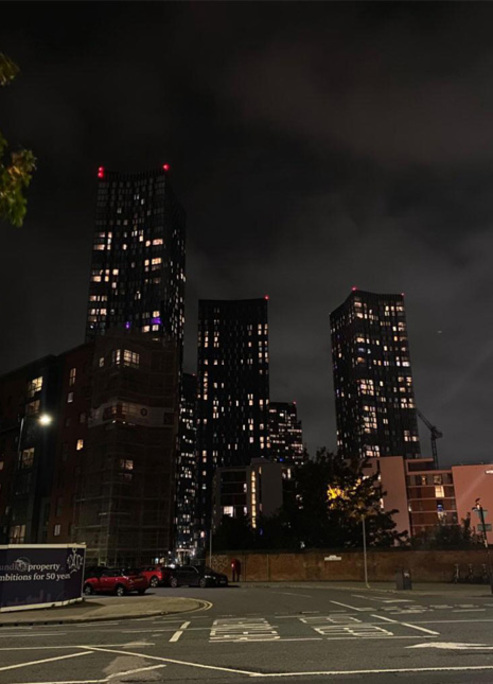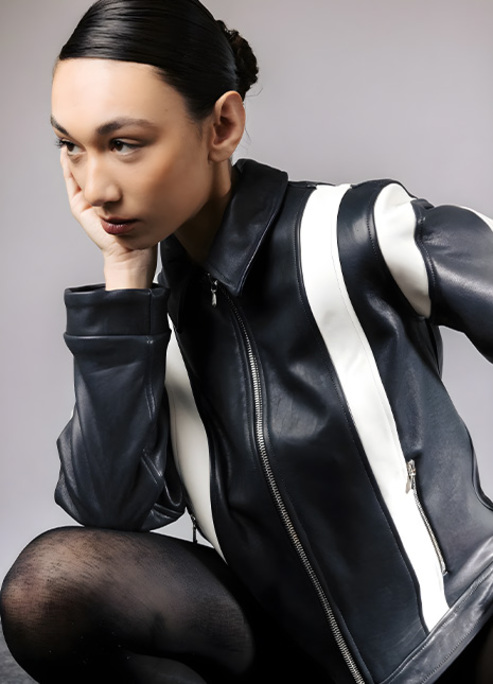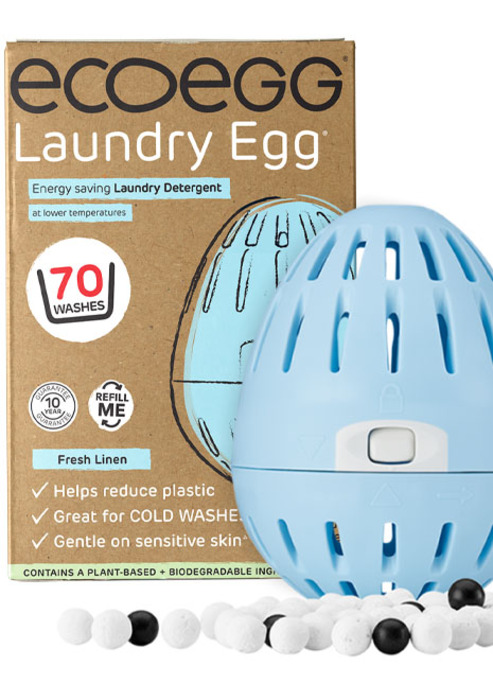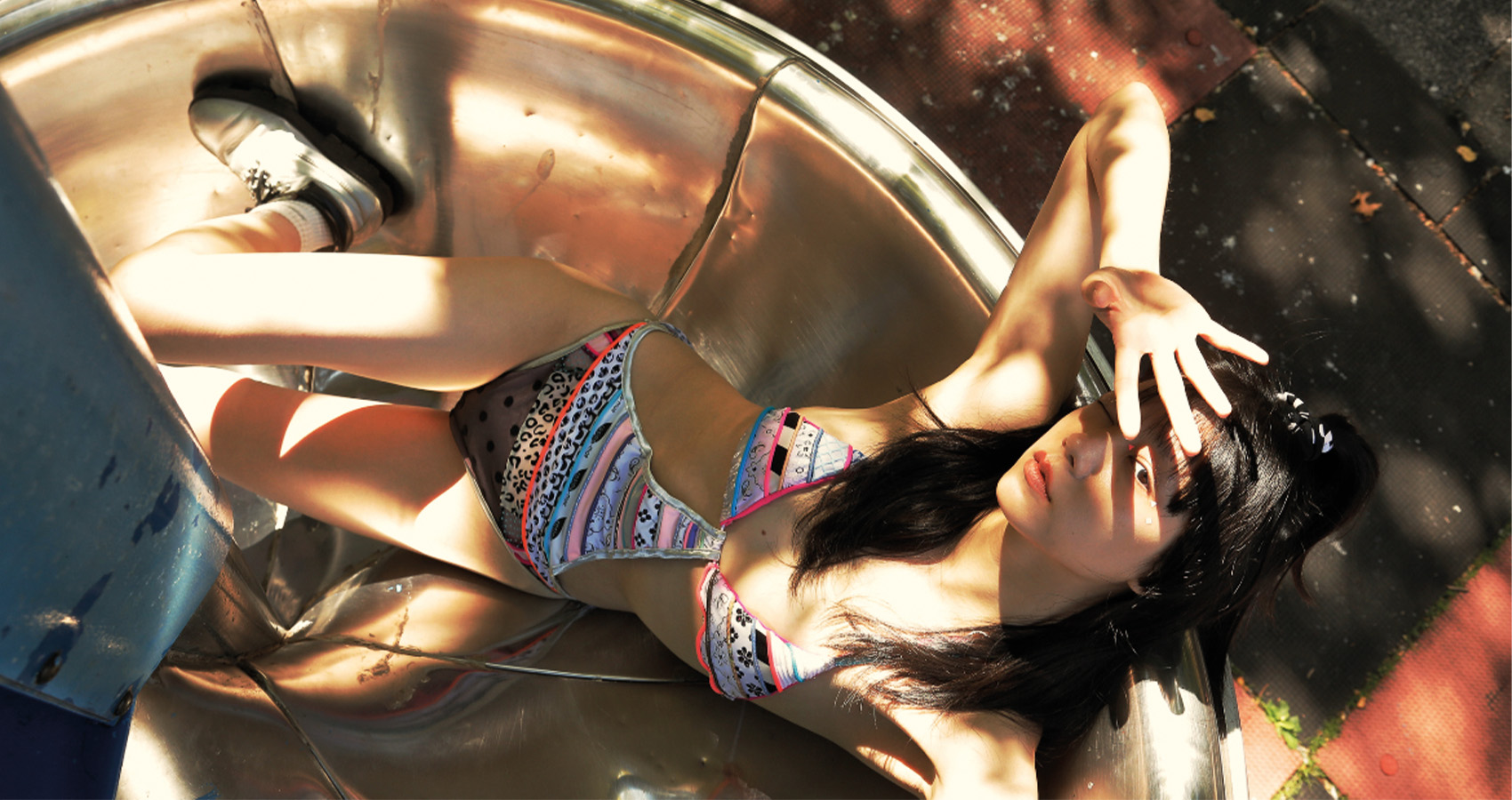
Rosie Mae Turner on Sustainable Fashion, Social Activism & Serving Looks That Last
The Rosina Mae designer on eco-friendly fashion and making sustainability stylish.
Versatility is the word you'll hear when you see anything about Rosie Mae Turner. Raised in Springfield, Illinois, and graduated from Chicago, the textile artist founded her label Rosina Mae back in 2009. An eclectic swimwear brand with a lot of patchwork and color-blocking, the designer's goals go far beyond innovation and the wearer's comfort. As a climate activist, she cares deeply about the environment, making her label not only an ultra-pop summer feast, but also a sustainable gem at heart.
Based in New York since 2016, with collections shown at New York Swimwear Week and featured in publications such as No Kill Mag, Rosie Mae Turner keeps the energy fresh, the fabrics clean and the ethos strong. Below, Fizzy talks to the artist about everything from sustainability in fashion to design philosophy.
Rosina Mae, what inspired you to start designing sustainable swimwear and textiles?
I love the way a bodysuit, leotard, or swimsuit hugs the form. I do find that I particularly enjoy creating complicated one-off swimwear pieces vs. replicating the same thing over and over again. I have many ideas for designs that I have yet to construct. These ideas keep me excited for new seasons. A made-to-order business model has been a natural fit and is more sustainable. My textile art is a recent development that I’ve been more focused on developing since 2019/2020.
I’ve always considered myself an artist… not specifically a swimwear designer. I merely fell into it because I happened to find that sewing on stretchy fabrics appealed more to me. As a former gymnast, I knew the stretch fabrics well. After my first two fashion shows, which mostly consisted of clubwear, I found it exciting that the few swim pieces were essentially the show-stoppers.
Swimwear-focused designers of the past, Rudi Gernreich, Liza Bruce, & Norma Kamali also have inspired me. I also love the designs and sustainability commitments of Vivienne Westwood and Katharine Hamnett. Designers who have an unusual and distinct point of view like Paco Rabanne, Andre Courreges, Junko Shimada, Hussein Chalayan, Sonia Rykiel, and Jean-Charles de Castelbajac inspire me greatly. Since I do archival work on the side, It’s been wonderful to learn about the designers who paved the way before me. To me, learning about past designers is more important than obsessing over current celebs.
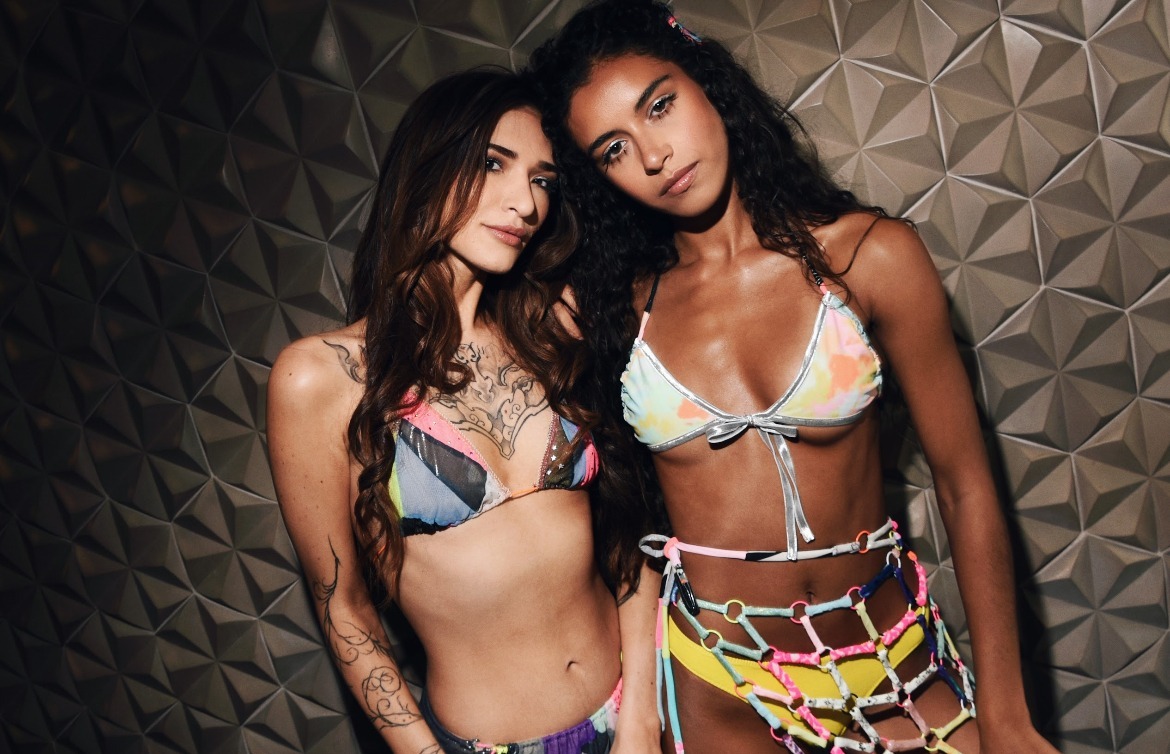
How did your journey into textile art and design begin, and what led you to focus on sustainability?
Ecology interested me as a young kid growing up in the 1990s. I was always high energy and getting into many creative projects. Being an only child also led me to find ways of entertaining myself. Before the internet that meant doing something hands-on. My grandmother taught me to knit around 1995 and learning that simple skill really had an impact on me. I also think it helped that my mom has always been very into the environment. She’s a college professor with a PhD in physiology. We would go produce shopping at food coops before they were really “a thing” and she always emphasizes taking care of myself (and also the Earth). I didn’t set out to be a fashion designer… but by high school, I was pretty certain I would be eventually. My love of art transferred over to textiles and I began to play around more with fabrics. My mom always made all of my Halloween costumes and occasionally I’d try my hand at sewing my American Girl dolls some clothes and in high school, I started upcycling and DIYing things here and there.
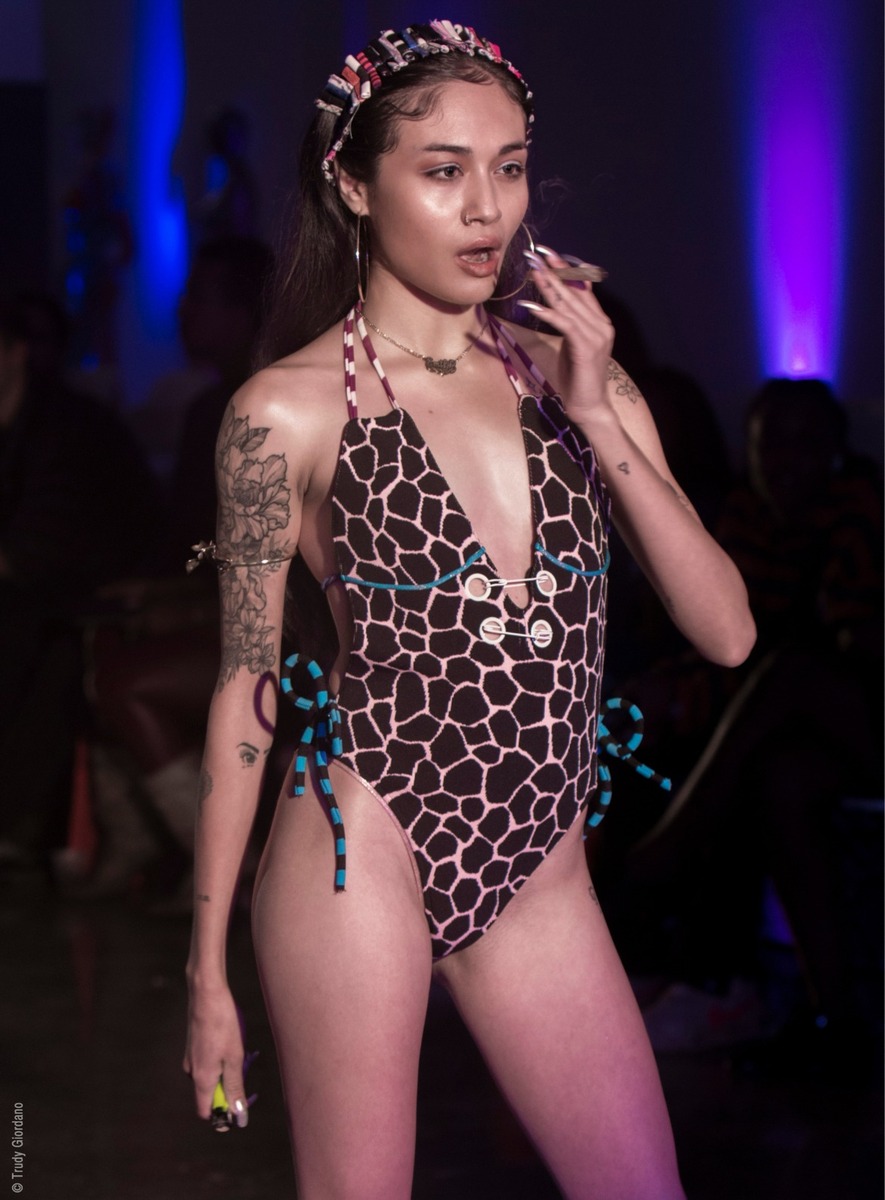
How do you personally incorporate sustainability into your lifestyle outside of your professional work?
I am always on the go and an avid user of public transportation. When the weather in NYC is warmer I am almost always biking around town. As you probably know, the fashion industry runs on coffee and something I have implemented into my day-to-day is bringing my own coffee cup to cafes. On my sets (when I produce my own shoots), I now only provide water in glass bottles.
I also volunteer my time with local climate non-profits and enjoy freelance sustainability consulting and archiving mostly for startups. Activism and learning about various climate legislation is something I'm passionate about.
How does your design philosophy work and how does sustainability play a role in it?
I design pieces to be worn in a variety of ways so that idea factors into the longevity of a design and how many wears a piece has. Lately, I am trying to find creative ways of showing the same garment worn multiple ways on various models. I am heavily into diversity and individuality. I love seeing how people style Rosina~Mae with pieces already in their wardrobes.
I sew around 85% of my samples. My production is extremely localized so I have the ability to be in control. Manhattan’s Garment District is where much of the manufacturing takes place. This way I can ensure all persons helping to make Rosina~Mae swimwear earn a living wage. Transparency regarding garment workers' rights is of utmost importance when it comes to producing a sustainable garment.
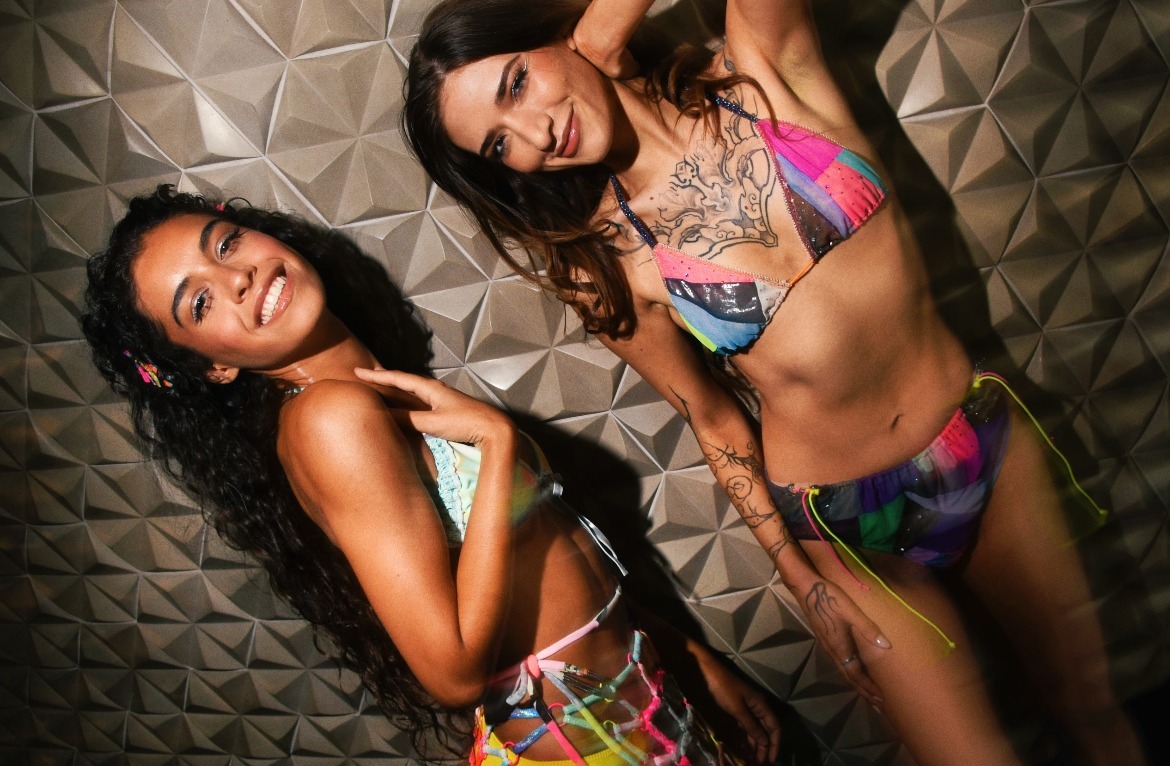
What challenges do you face when sourcing sustainable fabrics for swimwear, and how do you overcome them?
Most swimwear fabrics are made from fossil fuels. I mainly use regenerated nylon fabric and Sorona® for some of my designs… in addition to deadstock and reclaimed fabrics. The only thing is that for some of the reclaimed materials I have no way of knowing the fabric makeup. BUT… by opting for old or deadstock fabrics I am veering away from newer and more toxic materials. I do believe used materials are better since they're already here even though many are synthetic. Newer isn't necessarily better.
What key materials or techniques do you use to ensure your swimwear is eco-friendly, and why?
I’m drawn to more saturated hues. Keeping even the tiniest fabric scraps so none go to waste is a priority. Pre-cutting my patterns is something I do because I don’t want to chance that the manufacturers will throw out leftover fabric.
Experimenting with different ways of doing patchwork is how I can use so many fabrics in one garment. Making my own piping and knitting with the yarn I’ve made from stretch remnants has been time-consuming, yet so enjoyable.
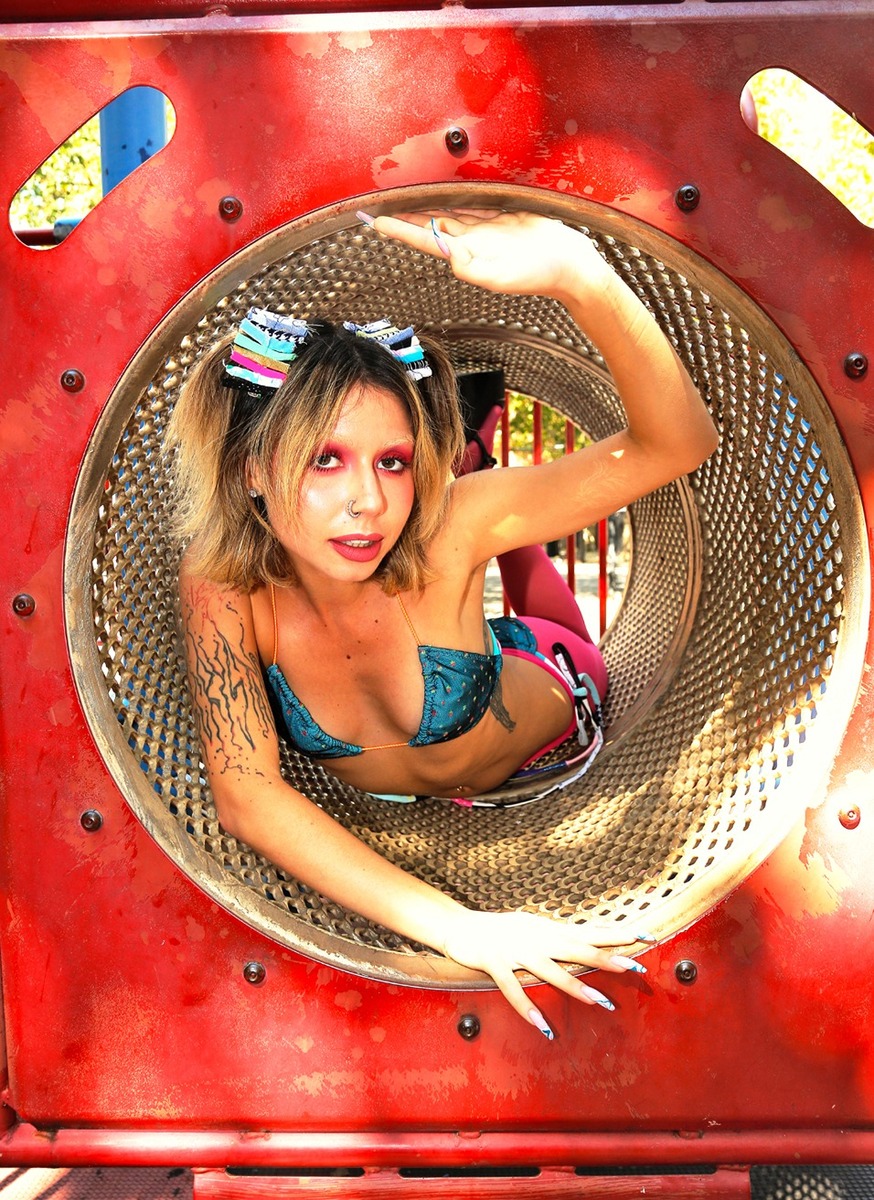
How do you stay inspired and keep your designs fresh while remaining committed to sustainable practices?
Inspiration comes in waves at random times, so I constantly jot ideas down. Going to art events and having other designer friends in the city (with similar ethos) to bounce ideas off of and share resources has also been motivating. A friendly community that is more into collaborating rather than competing is great.
I had a teacher that greatly impacted me freshman year of college at Dominican University (which is located in a Chicago suburb). His name is Geoffrey Mac. Well over a decade before Geoffrey went on to win Project Runway he was an adjunct design instructor at my school. He taught me so much and I also really appreciated his latex pieces and unconventional design aesthetic.
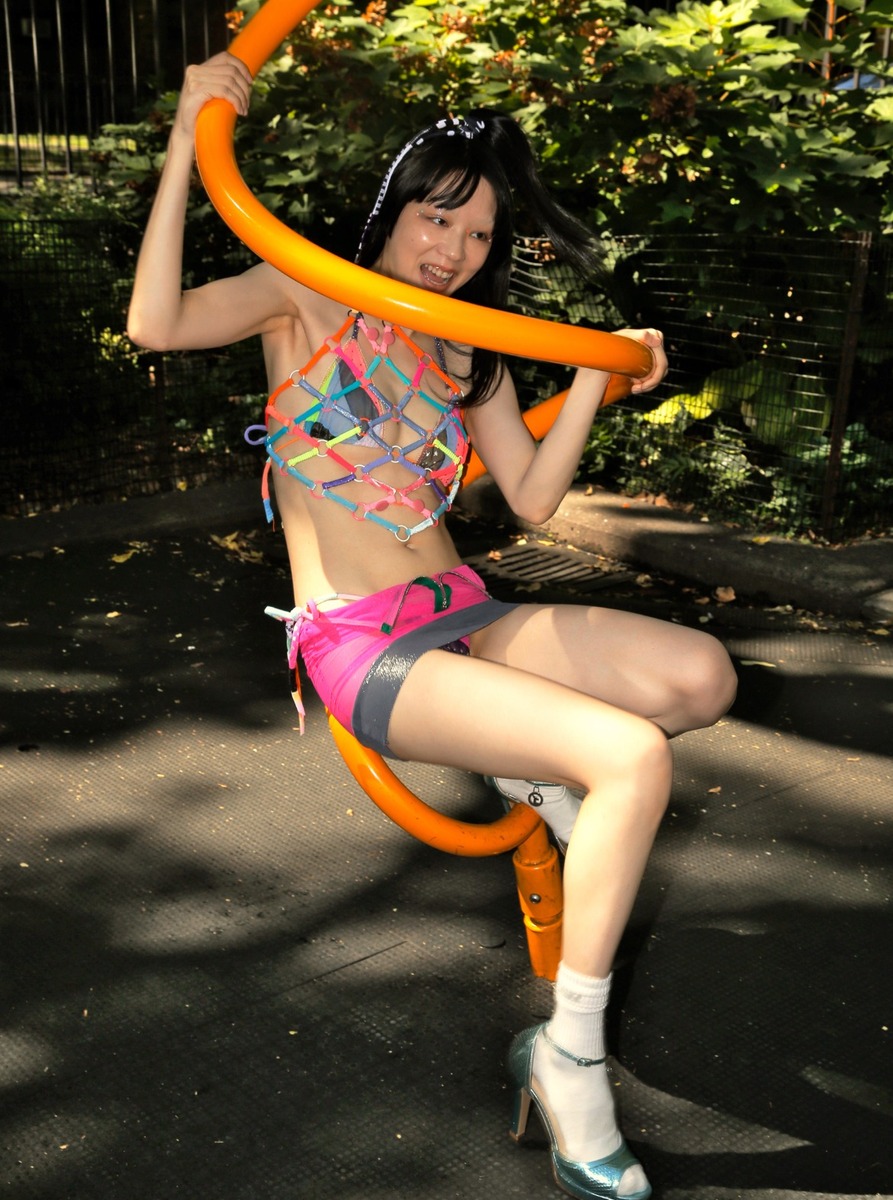
What is your design process like when creating a new swimwear collection?
A story of the overall vibe comes first. Playing around with fabric and draping all day is where I usually start and that tends to direct what happens next. Lots of caffeine is needed. Coming up with broad concepts first, I will then usually go right into creating flat-patterns. I jot down notes to remind me of ideas I have in my brain, rather than sketching them out. Referring to past concepts that didn’t make the cut from previous seasons, I will revisit things that worked and slightly alter them.
Do you experiment with unconventional materials in your designs? If so, can you share any interesting projects?
When I first started my brand I was using fabrics from my gymnastics leotards and also dance outfits from friends. Now I obtain most materials from a local textile recycling facility. I also came across a dumpster filled with fabric in the garment district and posted a video about it to TikTok. So yes, I have used fabrics obtained while dumpster-diving in my brand, lol. I experiment with creating my own textiles by color-blocking very small fabrics. I eventually want to do large-scale pieces, installations, and more theatrical interactive fashion shows at galleries.
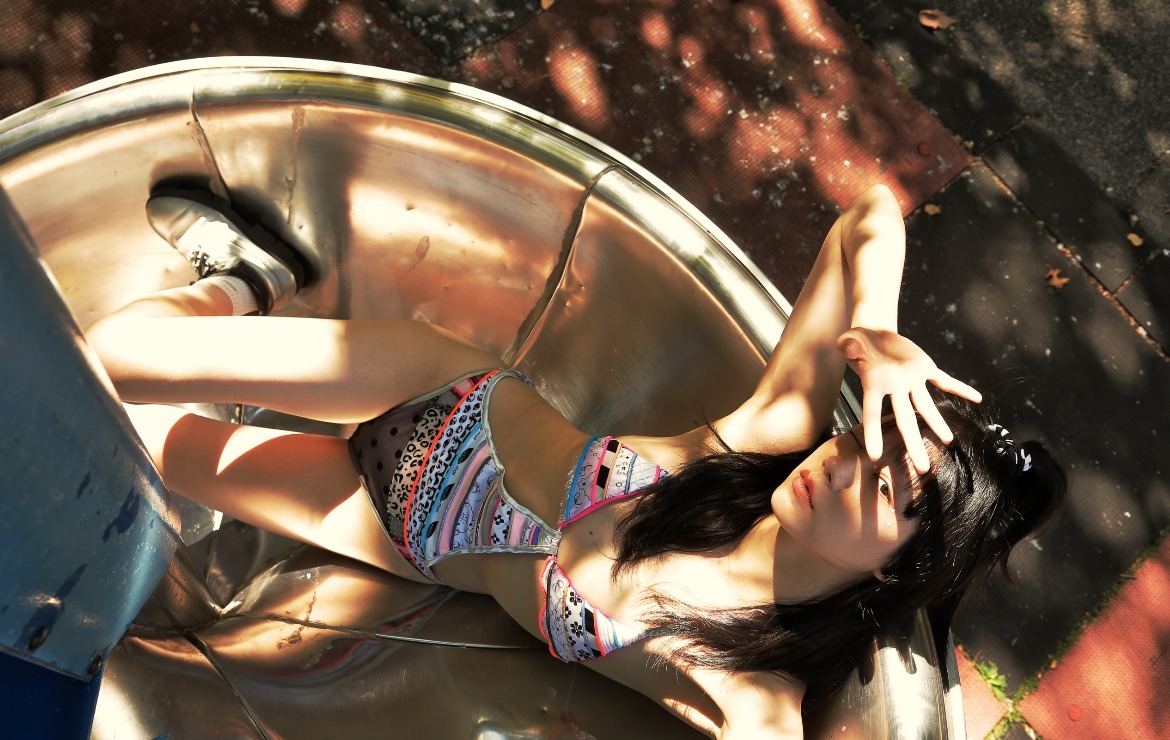
Are there any trends in sustainable fashion that you’re particularly excited about or that you think will be influential in the future?
I am very hopeful now that certain fashion weeks have implemented sustainability requirements for applicants. Copenhagen Fashion Week is paving the way for this and hopefully, more of the fashion weeks will follow.
What was the experience of being part of NY Swim Week in 2023 like?
Rosina~Mae was featured in NYSW from 2022 to 2024. Each year the shows felt slightly different, but the comradery amongst the models remained the same. I love working with models who are into the environment. They seem really happy wearing my clothes and believe in my designs. Influential model-activists who have worn my designs on the runway in New York Swim Week were Leyna Bloom and Brana Dane. Both of them also backed the Fashion Workers Act which recently passed in the state of New York.
Are there any future projects or collaborations you’re excited about?
Well, I just completed a collaboration with eco-recording artist Sirintip who pulled my designs for her tour this winter. It was incredibly inspiring to have someone whose work aligns with my values wear my designs on a big stage.
I have a few collaborations coming up with local creatives and I am interested in participating in an artist residency of some kind.
Additionally, I plan to finally sell limited pieces online via my own website in honor of my brand’s fifteen-year anniversary. So stay tuned for a site revamp. I still prefer brick-and-mortar shops but I know it’s time for online sales as people have requested.
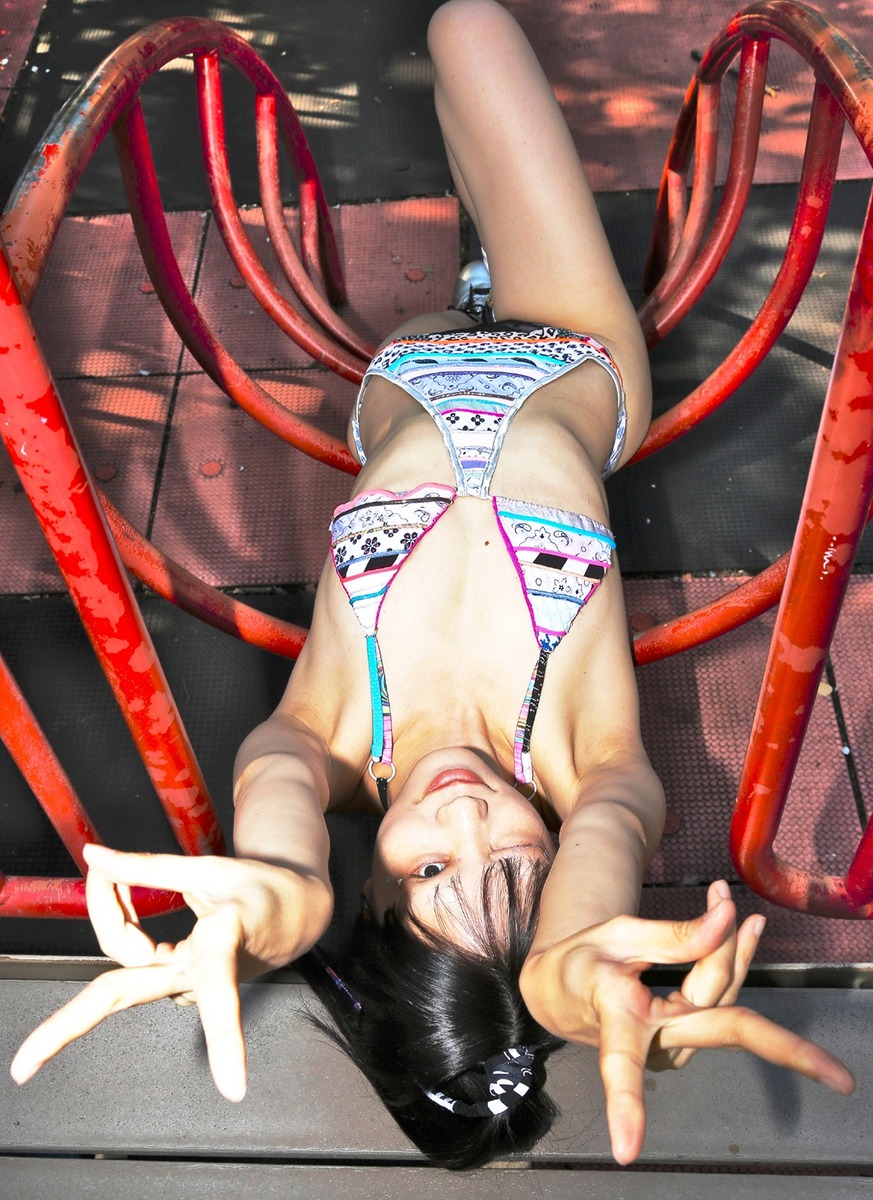
How do you engage with your audience about the importance of sustainable fashion, especially in an industry where fast fashion brands are predominant?
I try to educate a bit via social media. Especially when new pieces of legislation pass, I get really into it. I also talk about the importance of caring for swimwear and repairing what you already own.
Working with local climate leaders and ethical influencers who already are familiar with slow fashion vs. more superficial types (who do fast fashion hauls) also helps get messaging across.
I loved working with Jamie Margolin who is a climate activist and author. She wore my pieces on the runway in House of Yes’ Earth Month fashion show in 2024 and also Fashion Week Brooklyn in 2023.
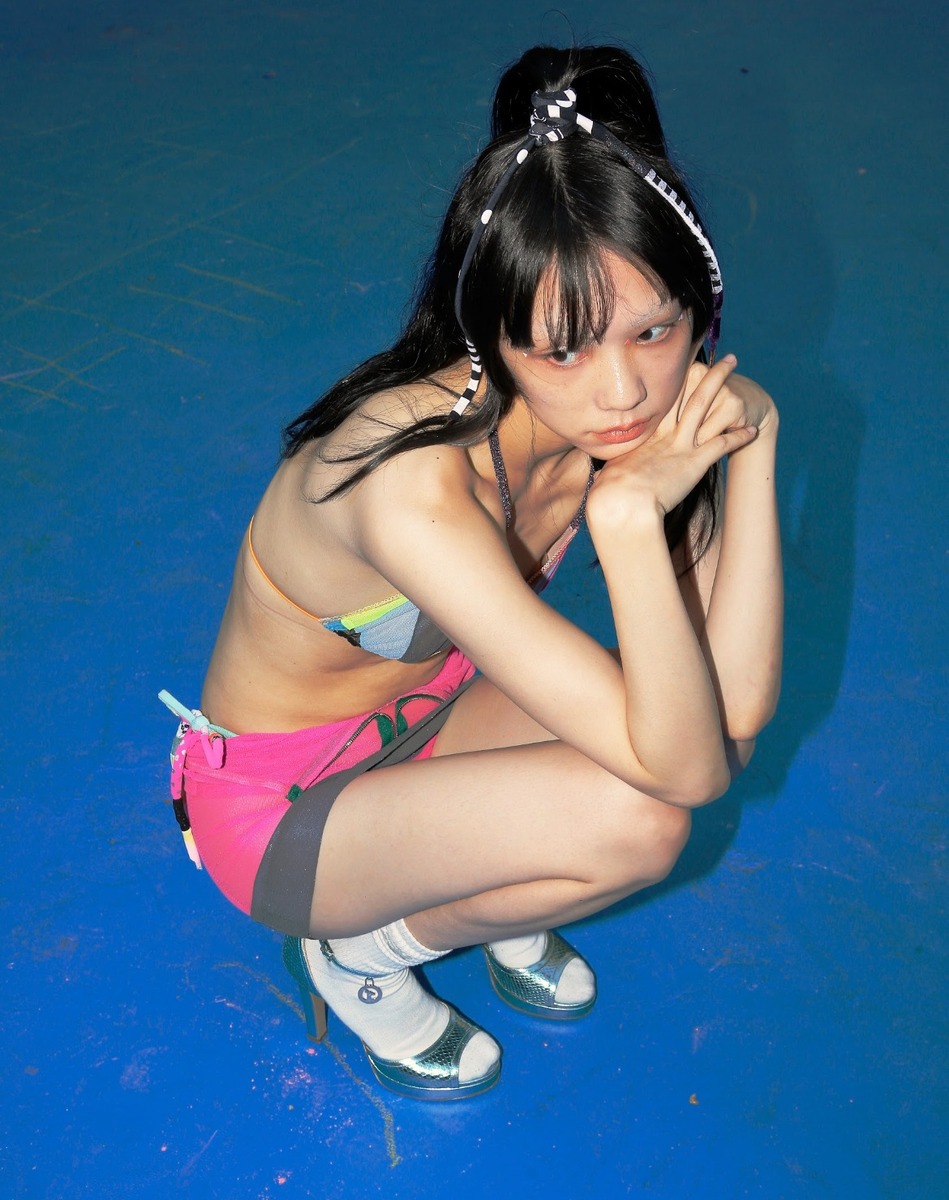
How do you see the swimwear industry evolving in terms of sustainability in the next 5 years?
I believe that more companies will continue to explore using a range of newer sustainable materials… but that there may still be some greenwashing on the production side of things. I really wish people wouldn’t outsource their production because it doesn’t allow for full transparency unless you’re physically going to the factories.
I also think that with climate change being a concern, more people will opt for quality swimwear in case of an emergency.
What has been the most rewarding aspect of working as a sustainable swimwear designer and textile artist?
Meeting so many interesting people through the various shows and connecting with those who have purchased my designs for sure. It’s been amazing seeing my work published in magazines, in art galleries, and New York Fashion Week and New York Swim Week. Feeling seen as an artist makes me happy.
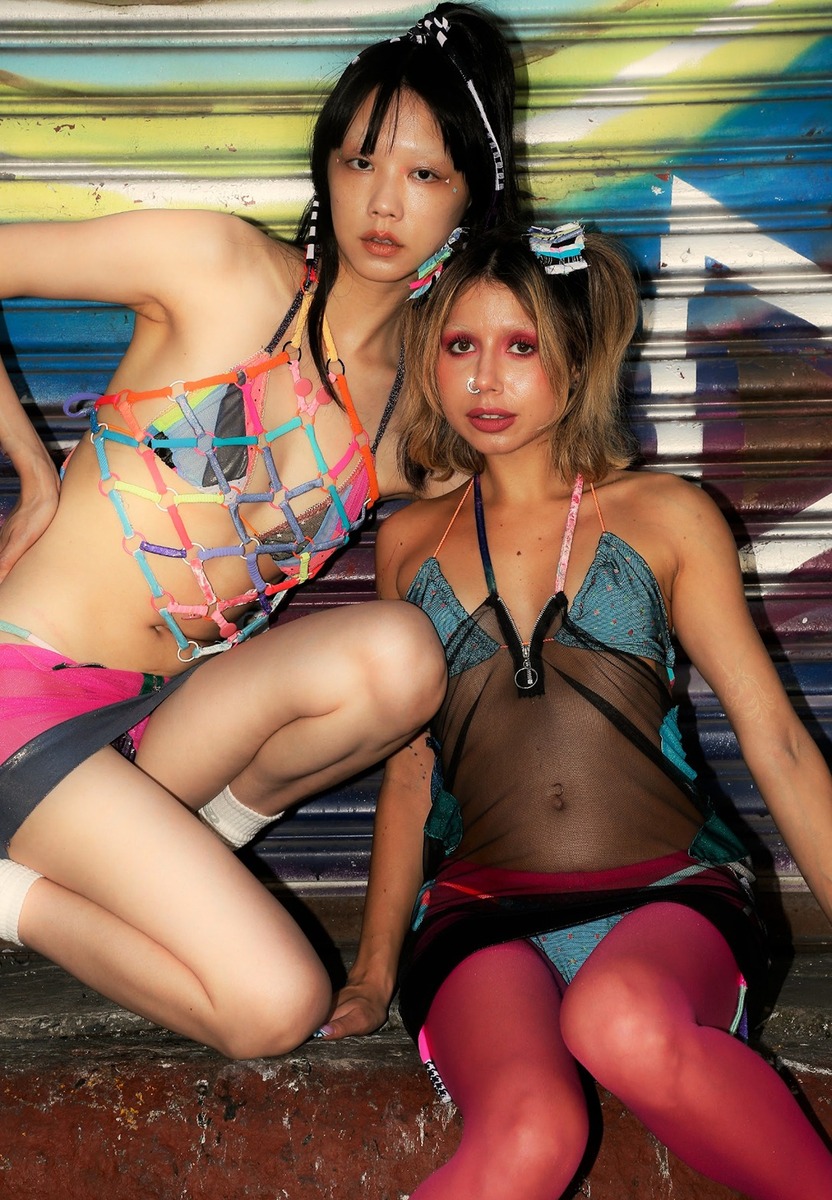
What advice would you give to aspiring designers who want to start creating sustainable clothes?
Have a unique point of view and create something that pushes boundaries in terms of what’s been done, but also make sure your design is circular keeping the environment in mind. Be transparent about every aspect of your design process from fabric to finish.
Find out more about Rosie Mae Turner at Rosinamae.com follow her on Instagram at @rosina_mae



